Nenets People – Extreme Travel Photography with Olympus E-M1 MkII (Part 1)
Nenets – basic information
The Nenets also known as Samoyed are small ethnic group native to northern Russia. According to latest census there is 44,857 Nenets in Russia. They reside in north-western Siberia (Yamalo-Nenets Autonomous Okrug) and north-eastern part of European Russia, from Yamal peninsula to Taymyr peninsula (Nenets Autonomous Okrug). Their mother tongue is Nenets language, but they also speak the official language, Russian.

Based on their way of life Nenets can be separated in two distinct groups. Tundra Nenets who are the majority and small group of Forest Nenets. Forest Nenets live in Lower Ob, while Tundra Nenets are nomads, shepherds who make they living of hunting wild reindeer. Over the centuries the way of life of Tundra Nenets has barely changed and they live just like their ancestors did.
Me and my photo-buddy Patrik have decided to visit group of Tundra Nenets which was lives on Kanin Peninsula, located in European part of Russia – Nenets Autonomous Okrug. When the winter comes, Nenets travel south, to the winter pastures. The group of Nenets we were traveling with was headed to the Mezen region in Archangel area. They travel from November to January and after three months and roughly 600 kilometres they arrive at their destination, which is location close to Karypolye village.
While on the road, their daily routine shaped by the sunlight – the sun rises at 9 o’clock and the sunset is after 4 o’clock. This gives them 7 hours of daylight. Around 10 o’clock they pack the camp and gather their deer herd. Then they get back on the road. They travel about 3-4 hours, until they get to the “stojanka” (campsite). Shortly after they arrival they start to build the camp. Once the camp is built Nenets can finally cook some meal and enjoy their much-deserved rest. Typically, they stay in one spot for 1-2 days before packing the camp and getting back on the road.
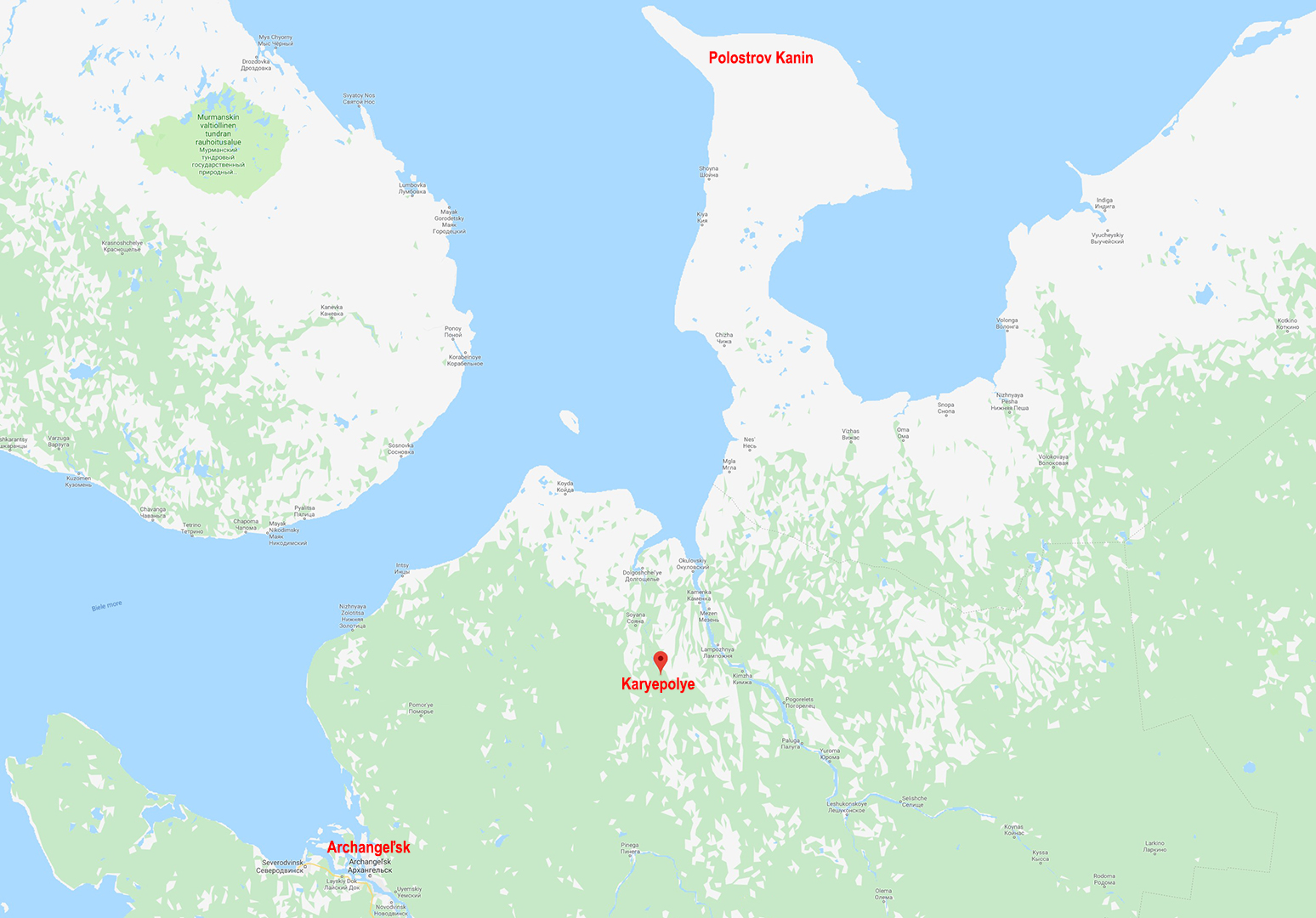
Our intermediary in the village is Alexander – he will establish our communication with Nenets and we will have our “base camp” at his house. His son Vasilij will arrange our transport from Arkhangelsk further up north. To get to Alexander we have to ride for 5 hours. He waits for us at agreed location – “postoyka” (roadhouse) close to village Sovpolye. There we finally meet Alexander and two Nenets, who await us on snowmobiles. At first the Nenets don’t like our looks due to our civil clothes. However, this quickly changes once we change into our arctic gear, to which Nenets react with laughter and admiration.

First contact with Nenets
We get on the snowmobiles and begin our ride. Not so soon after we leave all signs of civilization known to us behind. After one hour of ride we meet two Nenets riding on sled pulled by reindeer. They recognize our companions and so we greet each other. After some small talk we find out they are searching for part of their herd which wandered away. After three days they still can’t find it. We noticed that apart from one reindeer the only thing on their sleds is some fur. Later they explain to us that the reindeer on their sled is not lazy. It is injured and can’t walk on its own. Unfortunately, it will not survive much longer.

Since they have no gear or anything that could be used as a shelter we enquired about the way they spend the night. Slightly surprised by the question, they explain that they sleep on their sled. They don’t need any kind of camp or shelter since they have the “malica” – long fur-coat with hood and gloves, made from two layers of fur. Right now, the temperature is -30°C and it gets below -35°C during nights. However, since Nenets are people of small growth they can just bend their knees to create empty space in the lower part of their coat. Then they tie the empty lower part with belt to prevent their body heat from escaping. This way they create sleeping bag that they always carry on themselves.
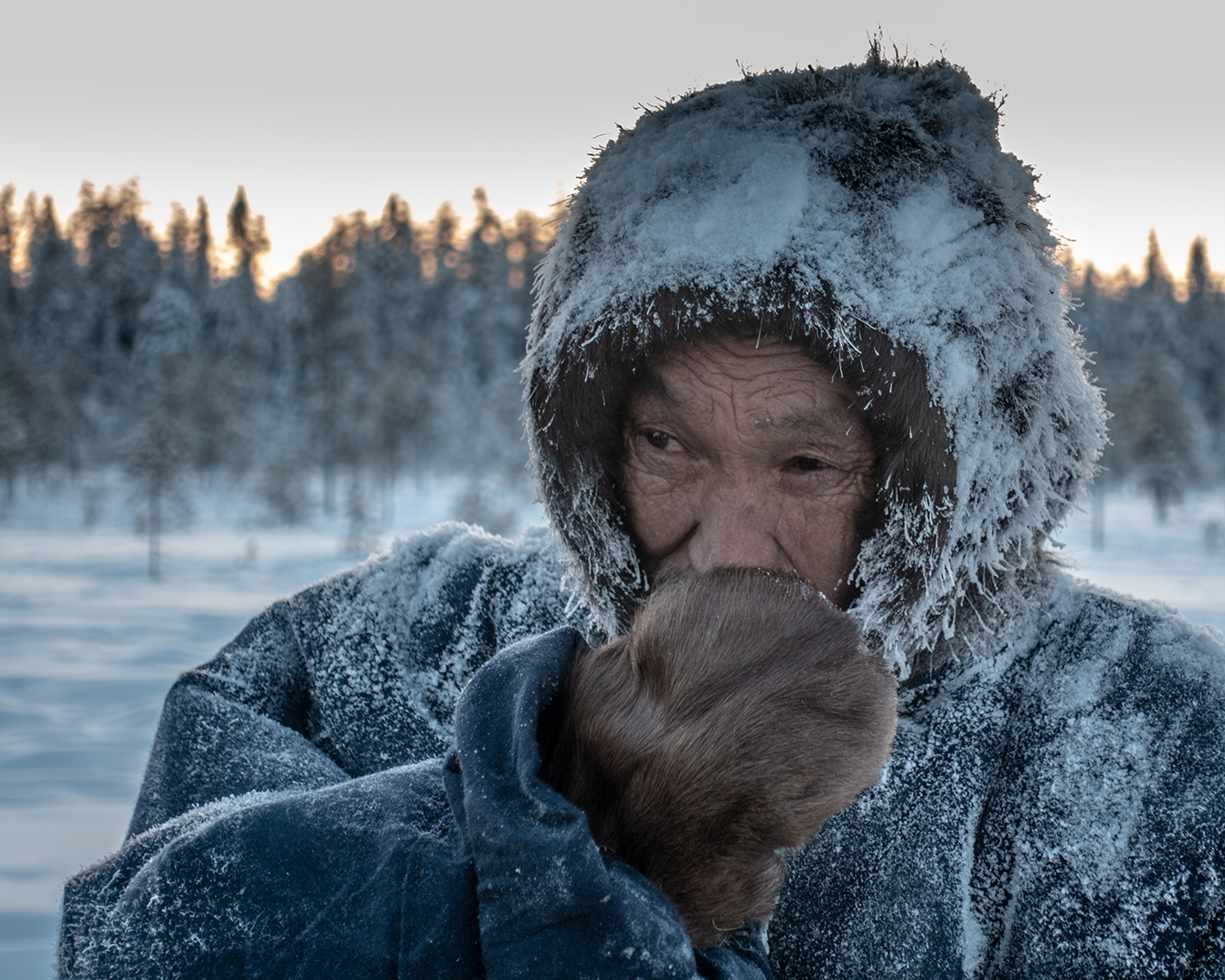

At this point we begin to truly admire them. Once they tell us some local news about other camps, we get back on the road. They get on their sleds, and we get on our snowmobiles. Since the drive through snowy terrain is physically challenging we must take over the snowmobiles from time to time. The Nenets appreciate the rest and opportunity to simply enjoy the ride.

Kar’yepol’ye
Kar’yepol’ye is a village located on a river Kuloy. Since it is surrounded by swamps there are no roads connecting it with outside word. Locals call this area “Russian bezdorožie” (area without roads). During a winter, you can get here on snowmobiles since the swamps are frozen. During a summer on the other hand, the only way to get there in on a boat. The closest road is 30 kilometres away and it is road connecting local centre Mezen with regional capital Archangelsk. On both snowmobile and boat, it takes roughly 2 hours to get from the village to this road.

Kar’yepol’ye used to have 1000 citizens. Now it has only 50 people living in it and all of them are seniors. Younger people move to bigger cities for work opportunities and the village is slowly fading away. Even though some of the wooden houses in Kar’yepol’ye are more than 100 years old, they are still inhabitable. As well as the rest of Russian countryside, in Kar’yepol’ye there are stars on the houses, to indicate how many members has the family lost in Second World War.

Food wise the village is self-contained. During summer the temperature gets close to 30°C so the swamps are source of many crops which usually occur in higher sea level in Central Europe. Blueberries, raspberries or cranberries, these all can be found in swamps surrounding Kar’yepol’ye. They also raise livestock, keep horses and have cattle farm as well as their own bakery. And if someone wants something extra, Alexander owns small shop in the village.



Unsurprisingly all the houses made from wood as well as wood heated. Sasha’s house is one of the most modern houses – it has toilet inside. Not only is the toilet inside it is flushable toilet. Even though, the flushing mechanism doesn’t work, there is always bucket with water around. But it is still luxurious toilet compared to the rest of the outdoor toilets in the village. Especially considering the outside temperatures. The rest of the villagers are kind are talkative. They are mostly interested in the purpose of our visit. Once we explain to them that we are visiting as a photographers they don’t understand what do we want to photograph here, since as they say: “Everything interesting is in the cities.”

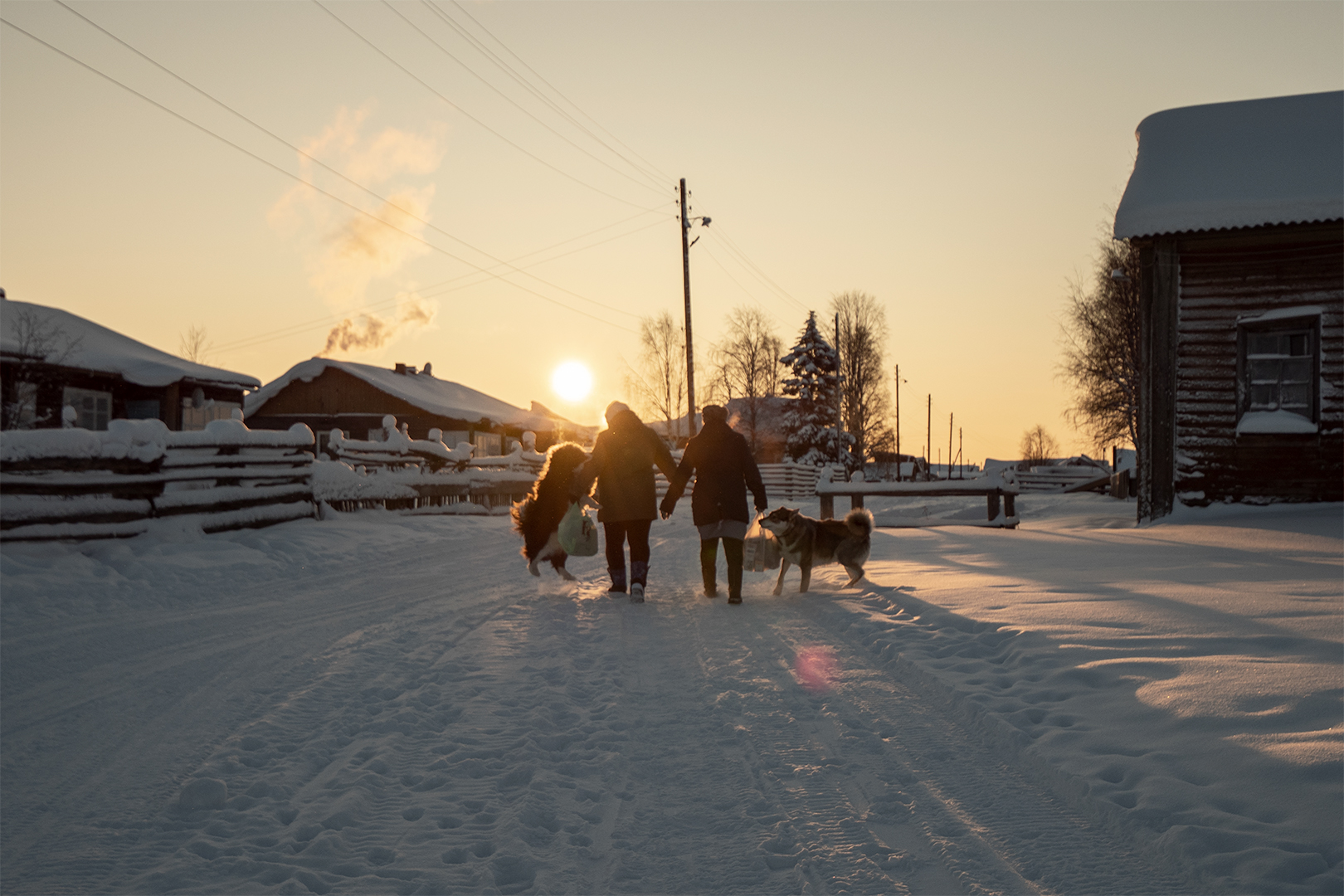
Brigade
Us and Nenets have agreed to leave at 9AM in the morning, as soon as the sun comes up. However, the Nenets were late. Later we find out that they don’t adhere to what time or date it is. They act in accordance with the sun, nature, weather and reindeer. Therefore, we hook up cargo sled to Alexander’s snowmobile and get on the road. My friend Patrik travels in the cargo sled.

Halfway on our trip we finally meet with the Nenets. We get on our own snowmobiles and arrive to the camp together. The camp is called brigade. This one is eight from total of nine. There used to be 12 brigades, but the number gets lower every year. The number of people in brigade gets lower every year as well. Not so long ago there used to be 5-6 tents in every brigade. Now there is only like 3-4 tents per brigade. They live in tents, one tent per family, all year and most of them have never slept with roof above their heads. The traditional circular tents – “chuma” have been replaced with modern tents with wooden grounding with dimensions 4×5 metres. Living room, kitchen, dining room and bedroom are all one room.


The heating inside of the tents is done by small furnace – “burzujka”. There is always enough of wood. However, the tent’s walls hold the heat inside very poorly, therefore they have to put more wood in the furnace almost all the time. During a night at least every two hours.


There is always something happening in the camp. No one is just standing around and everyone knows what to do. And there always something to do, since Nenets people craft everything by themselves from materials gathered from wood and reindeers. Everything from clothing and boots to harnesses and sleds. They are multi talented craftsman of forest and tundra.
However, their daily activities are based on the actions of reindeer. When they here reindeer approaching the camp, they drop everything and rush to enclosure.


Once the reindeer in the enclosure they begin working on, for us confusing, activities. After further examination we notice there are dividing them into groups. Some are supposed to be trained to help them with day to day activities, some are supposed to serve them as food and some are just briefly examined. They also saw off antlers of some reindeer. They didn’t use to do this 10 years ago. However, Nenets figured out they can easily sell the antlers, so they started sawing it off. Even though they do this shortly before the reindeer would lose their antlers naturally, it is still stressful experience for the animals and they usually resist.







Their basic food consists of reindeer meat, cooked or as a stew. As a side dish they serve rice or some pasta. Even though, they only have very basic spices, the food they prepare is surprisingly tasty. However, I have no idea how tasty it would be after eating it for several week or even months. Every summer they do so called big shopping. They buy resources for entire year and carry them with themselves everywhere they go on their sleds. One family owns around 10-12 sleds.

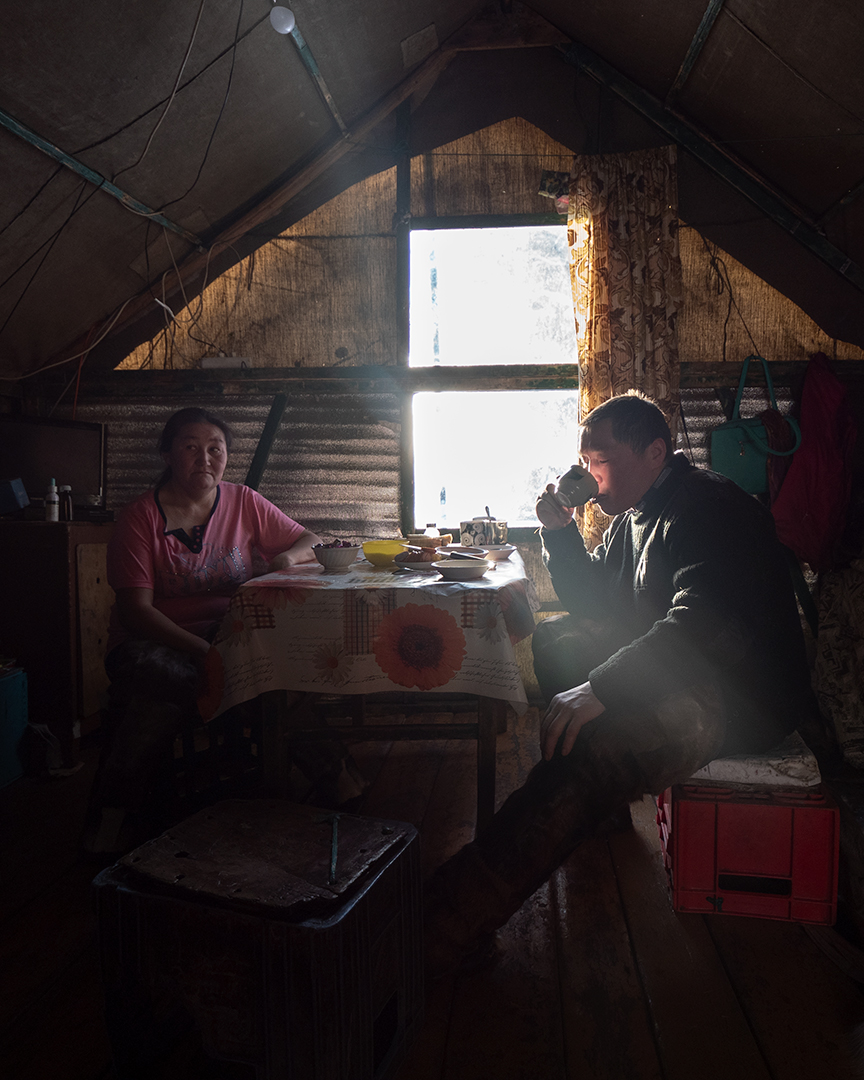
Since they don’t have no access to vegetables they don’t it almost any of it. Instead, as a source of vitamins they consume fruits found in tundra – blueberries, raspberries or cranberries. Another important source of vitamins is reindeer liver. They eat it raw, just like reindeer blood and heart.




When it comes to storage of the reindeer meat they don’t have to worry about appliances like fridges. Due to the freezing temperatures they just hang the meat on wooden poles around the camp. However, they need to hang it high enough, so the wolves can’t reach it.

Some of the meat they keep for themselves for consumption and sell the rest. The official buyout price of reindeer meat is 300 Russian ruble per kilogram. However, they manage to sell some of it unofficially to villages and cities form 320 – 350 ruble per kilogram.



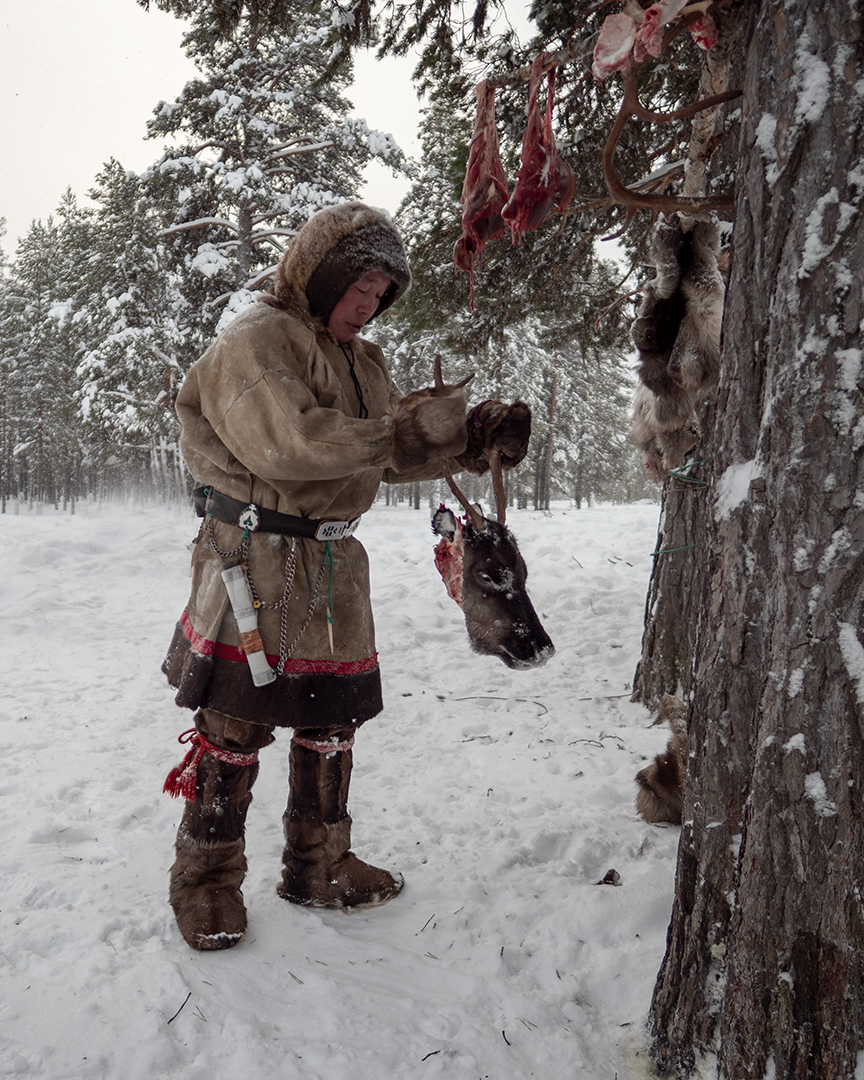

“The first time I smelled developer was in 1985 when I was a member of the National Sports Center (Parachuting) in Lučenec. With the tiny Smena 8M camera, I was trying to capture my parachuting colleagues when descending, jumping out of a plane, or even during the free fall. Burning glass and red light became my loyal friends. Later, with the switch to colour film, I, in turn, became a friend of photo labs.
In 2001, I switched to digital and after numerous changes of hardware, I remained loyal to Olympus mirrorless. Paradoxically, this change led to a gradual return to black and white photography and a classic photo film. It started with ‘ordinary’ black and white street photos, and then along came karate, landscapes, and infrared photography.
Today, I work almost exclusively in black and white. When taking a black and white photo, I don’t need to care too much about balancing the white or about colour profiles in printing and I can enjoy the actual process of taking photographs much more. Black and white photography is in fact quite liberating. Genres that I specialise in are simultaneously my hobbies – karate, skiing, backcountry skiing, scuba diving, mountain hiking, and travelling.”




